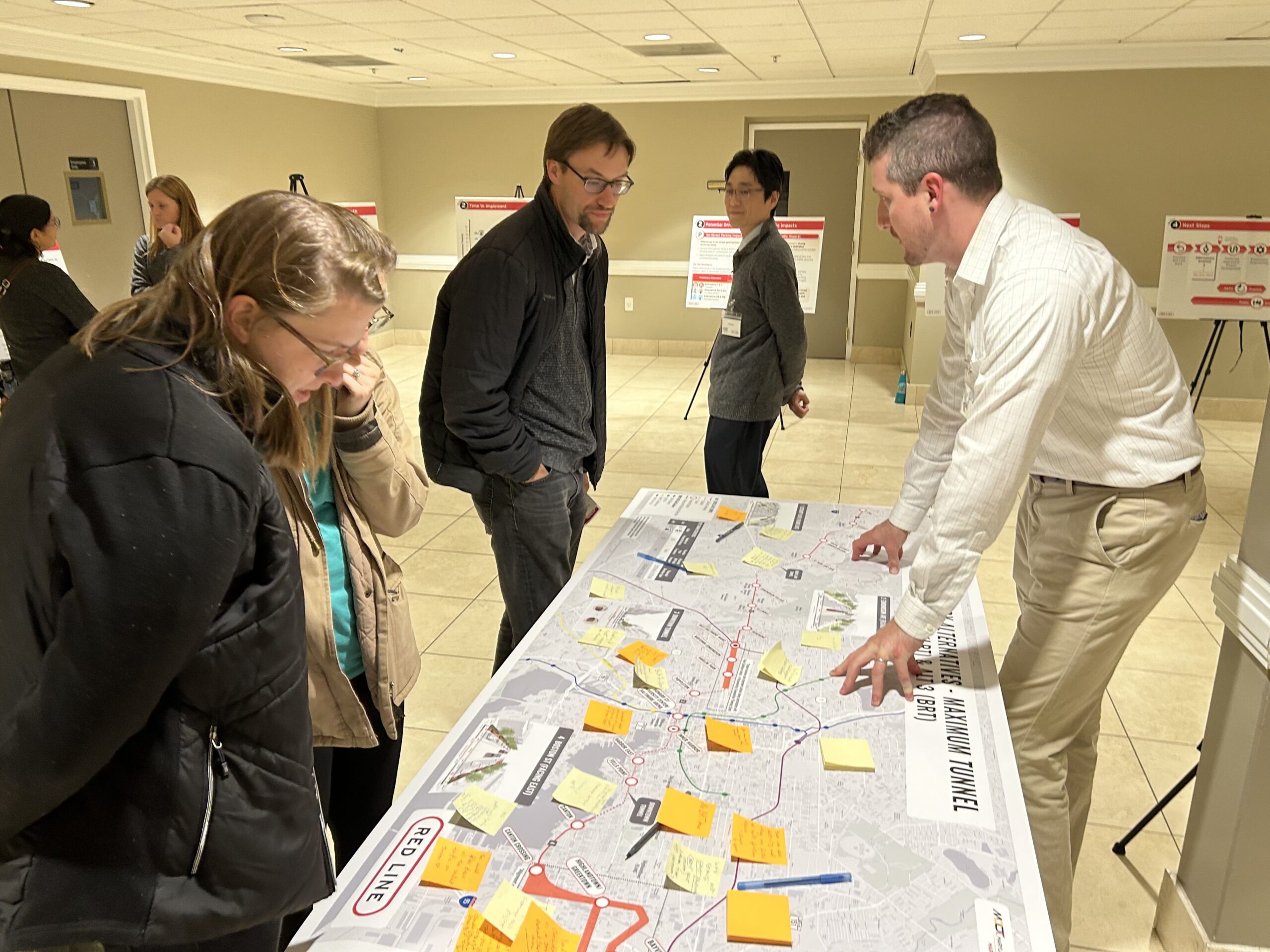
Red Line study area


Following the Red Line’s relaunch in June 2023, MTA explored several key considerations to develop and refine preliminary alternatives through analysis and public input:

Red Line study area
MTA is committed to working with our local, state, and federal partners to accelerate delivery of the Red Line project by building upon previous analyses to get the job done. We will be continuing public outreach and engagement in the summer and fall to ensure the Red Line can best meet the needs of the Baltimore region. We will also be working with our partners to develop a funding strategy for this project, including making this project competitive and well-positioned to receive federal funding through FTA’s Capital Investment Grant (CIG) Program.
Building upon the public input gathered during the focused engagement period in summer 2023, the Red Line project team developed and analyzed Preliminary Alternatives. Preliminary Alternatives included both Light Rail Transit (LRT) and Bus Rapid Transit (BRT) modes, as well as options including tunneled segments. Now that LRT has been selected as the preferred mode for the Red Line based on public input and technical analysis in fall 2023, the MTA will focus on further refinement of the LRT alternatives summarized in the table and illustrated in the maps that follow.
| Preliminary Alternative | Mode | Tunnel/Surface | Alignment | |
| Maximum Tunnel | Alternative 1 | LRT | Tunnel | Mimics the Red Line Preferred Alternative alignment from 2015. Includes the Cooks Lane and Downtown Tunnel. General alignment follows: Security Boulevard, I-70, Cooks Lane, Edmondson Avenue, US 40, Fremont Avenue, Lombard Street, Fleet Street, Boston Street. Different options being considered for Brewers Hill/Highlandtown area connecting to Bayview. |
| Maximum Surface North | Alternative 2A | LRT | Surface | Alignment on the surface. Alignment follows Security Boulevard, Cooks Lane, Edmondson Avenue, US 40, MLK Jr Blvd, Baltimore Street/ Lombard Street Couplet, President Street, Eastern Avenue/Fleet Street couplet. Different options being considered for Highlandtown area connecting to Bayview. |
| Maximum Surface South | Alternative 2B | LRT | Surface | Alignment on the surface. Alignment follows Security Boulevard, Cooks Lane, Edmondson Avenue, US 40, MLK Jr Blvd, Pratt Street, President Street, Eastern Avenue/Fleet Street, Boston Street. Different options being considered for Brewers Hill/Highlandtown area connecting to Bayview. |